Schnitzel is a popular pancake dish that is loved by many people outside of Austria. But what separates it from its worldwide counterparts, such as the Milanese of Italy and the katsu of Japan? It’s all about the breading, my friends—a golden, crispy covering that puffs up and separates from the meat, resulting in a symphony of textures that’s perfect for the palate. If the breading does not provide a distinct soufflé, why is it not schnitzel? Let’s look at the explanation behind this gastronomic phenomenon.
The Foundation: Perfectly Thin Meat
All superb schnitzels are meat-based. Generally, veal is the most common option in Vienna, but pork is preferred in the countryside. The key starts with a big slice that can be carefully hammered. It’s not only about looking attractive; this guarantees that the meat cooks quickly and evenly, preventing the bread from burning when it reaches the desired level of doneness. The tiny cutlet cooks fast, preserving the juiciness and making the bread delicious and fresh.
The Art of the Breading
Panning schnitzel is more than simply a covering; it’s an architectural masterpiece. The secret is in utilizing tiny breadcrumbs rather than thick panko. The tiny breadcrumbs adhere to the meat, creating a hard crust that may trap steam and expand like a balloon. The technique begins with finely grinding the meat, avoiding any corners that may adhere to the breading too firmly. After breading, the schnitzel must be cooked promptly to prevent the crumbs from soaking into the egg and weighing down the shell.
Hot, copious oil is required. It must be deep enough to thoroughly immerse the schnitzel without reaching the bottom of the pan. The heat from the oil provides immediate crispiness to the breading and generates necessary expansion.
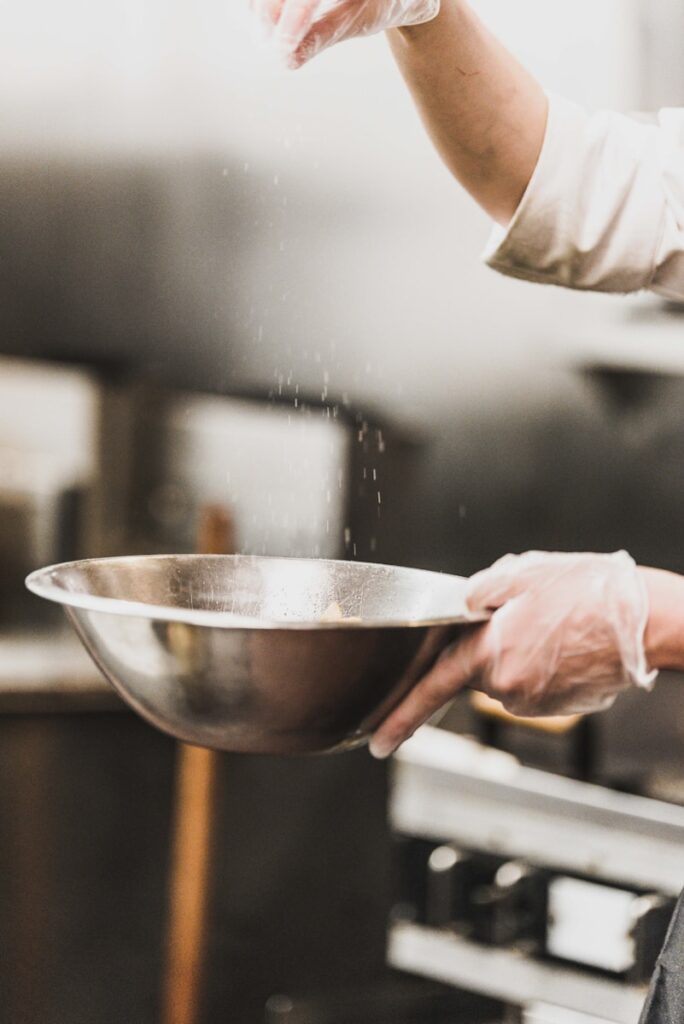
The Puffing Phenomenon
The schnitzel’s breading puffs up while cooking, creating a breezy gap that protects the meat from the oil’s extreme force. This puffing is not an accident; it is the result of the careful breading procedure and proper cooking technique. The separation of the breading from the meat guarantees that the flesh cooks gently inside its heated cover while the breading develops into a new, magnificent shell. Schnitzel’s appeal stems from the contrast between its solid exterior and its wet, delicate inside.
The puffing also demonstrates a high-quality schnitzel, demonstrating the cook’s competence and understanding of the dish. The divider allows the meat to cook evenly, remaining juicy and delicate, while the breading remains dry and hard – so dry, in fact, that Joseph Wechsberg essentially guaranteed you could sit on it without getting a fat mess on your trousers. Then I will share my skills for making an authentic Vienna Schnitzel.
It starts with adequate preparation before cooking, the recipe comes from: https://www.allrecipes.com/recipe/21427/vienna-schnitzel/
Ingredients:
- 2 pounds veal
- 1 cup all-purpose flour
- 4 eggs
- 1 tablespoon vegetable oil
- salt and pepper to taste
- 4 cups bread crumbs
- ⅛ cup oil for frying
Now that we have enough ingredients, we can start our delicious dishes:
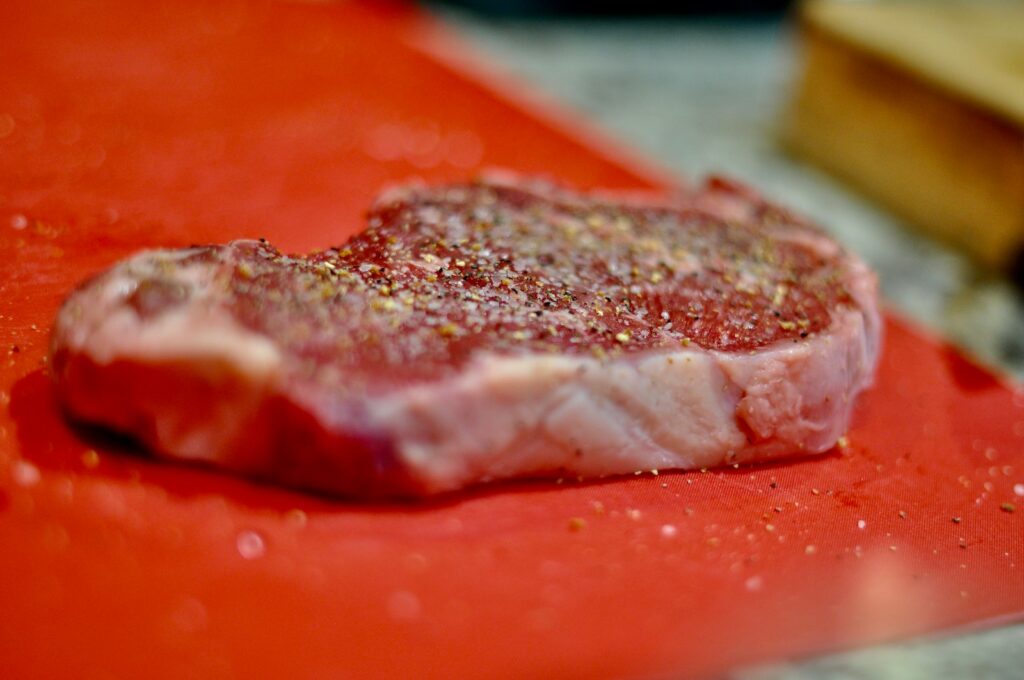
1.Cut the veal into steaks, about as thick as your finger. Dredge in flour. In a shallow dish, beat the eggs with 1 tablespoon oil, salt and pepper. Coat the veal with egg mixture, then with bread crumbs.
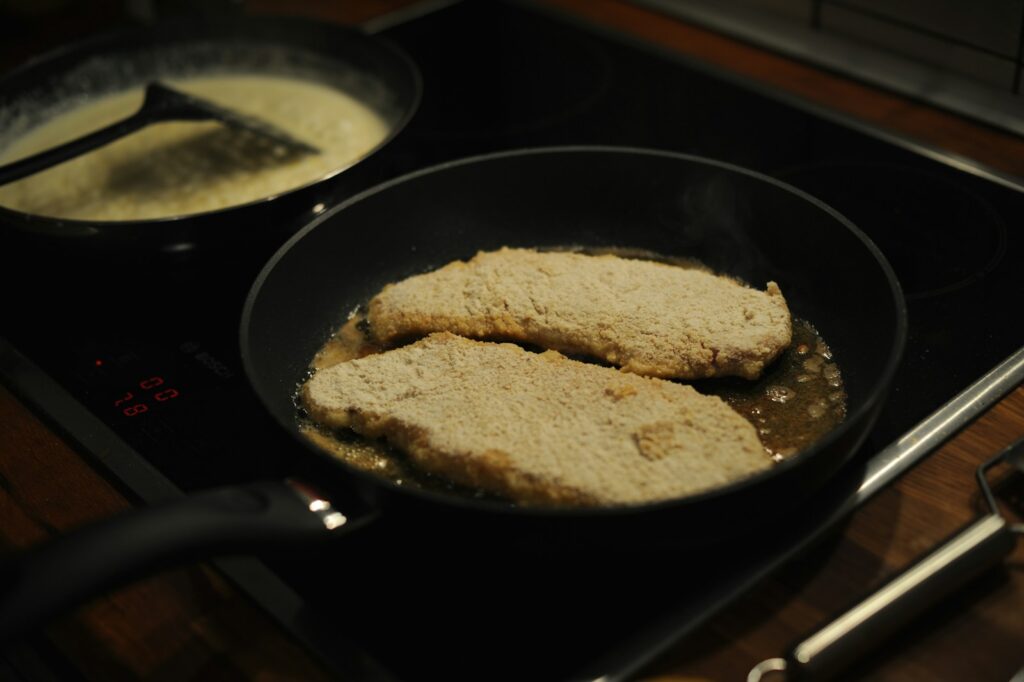
2. Heat 1/4 cup oil in a heavy skillet over medium heat. Fry veal until golden brown, about 5 minutes on each side.
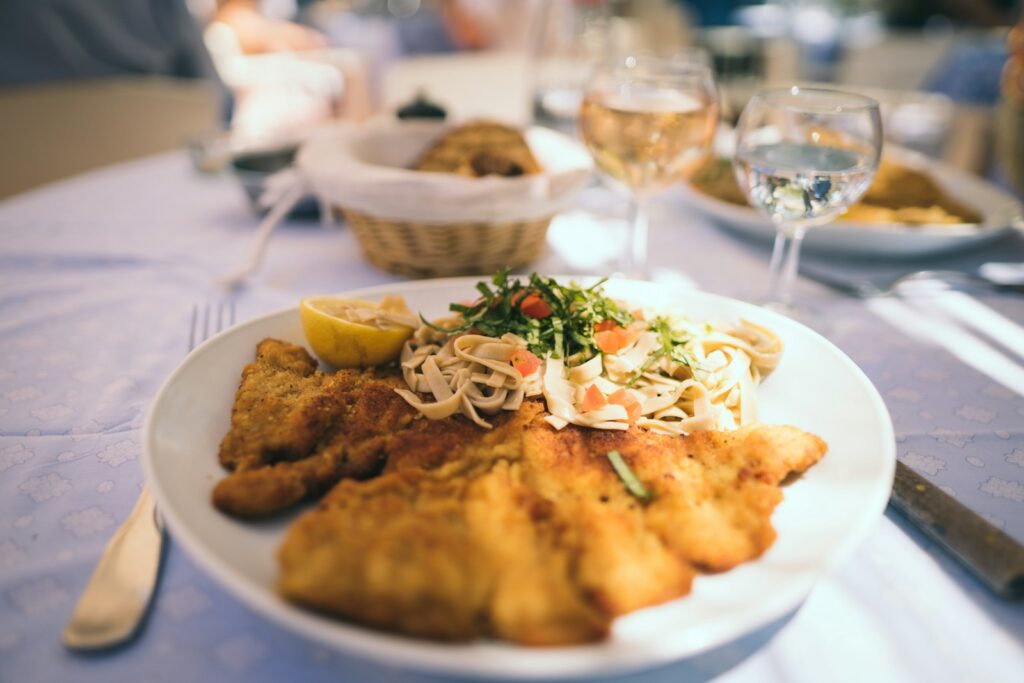
3. To personal preference choose if the excess oil from the cutlets will be drained off or not, and then it’s ready to eat!
A Culinary and Cultural Tradition
Schnitzel is a traditional Austrian dish that represents the meticulousness and perfection of Austrian cuisine. This passion is visible in the meticulous preparation of schnitzel, from crushing the meat to the proper thickness to creating the optimum breading puff. The cultural value of this meal stems from its approach, which has been refined over centuries.
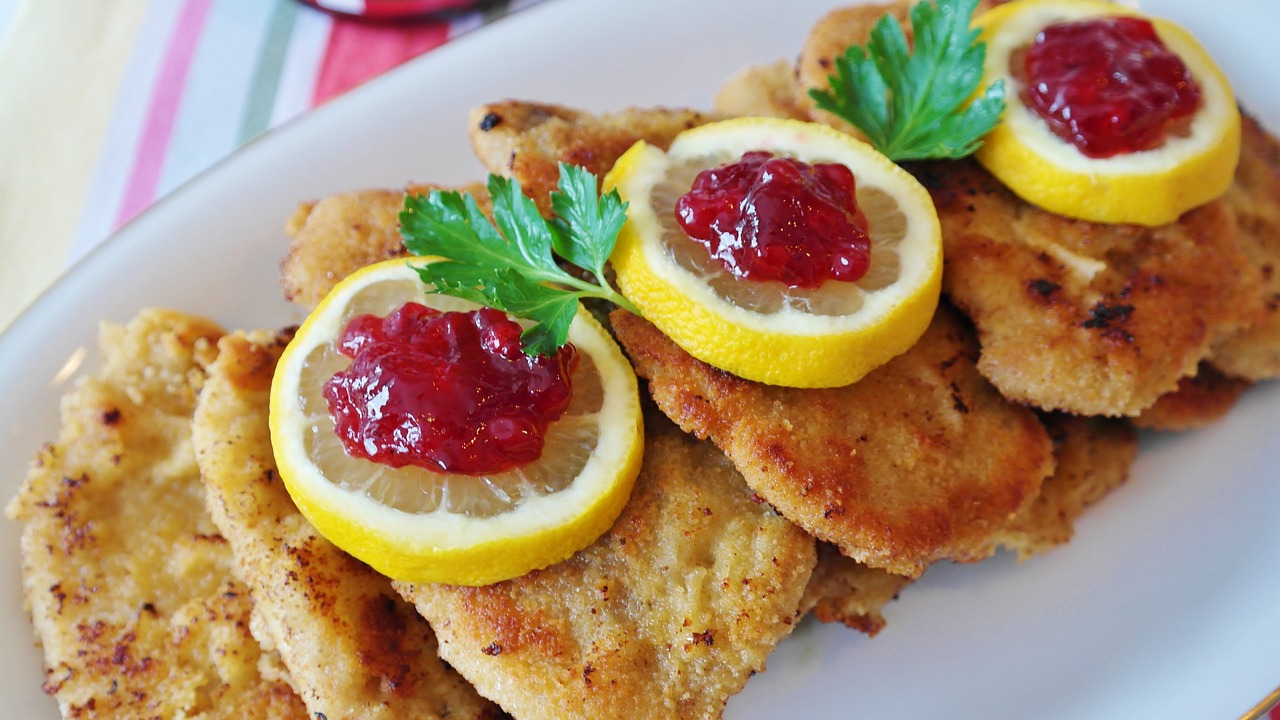
The oil should already be extremely hot and deep enough to allow the schnitzel to cook without touching the bottom of the skillet, the meat should be beaten to the right consistency, and the breadcrumbs should be fine enough to produce a robust external layer. Together, these factors provide an ideal condition for the breading to rise and separate from the meat.
Accept the bun, relish the crunch, and savor the exquisite flavor of the meat. This is the brilliance of schnitzel, a superb illustration of something far greater than its components.



